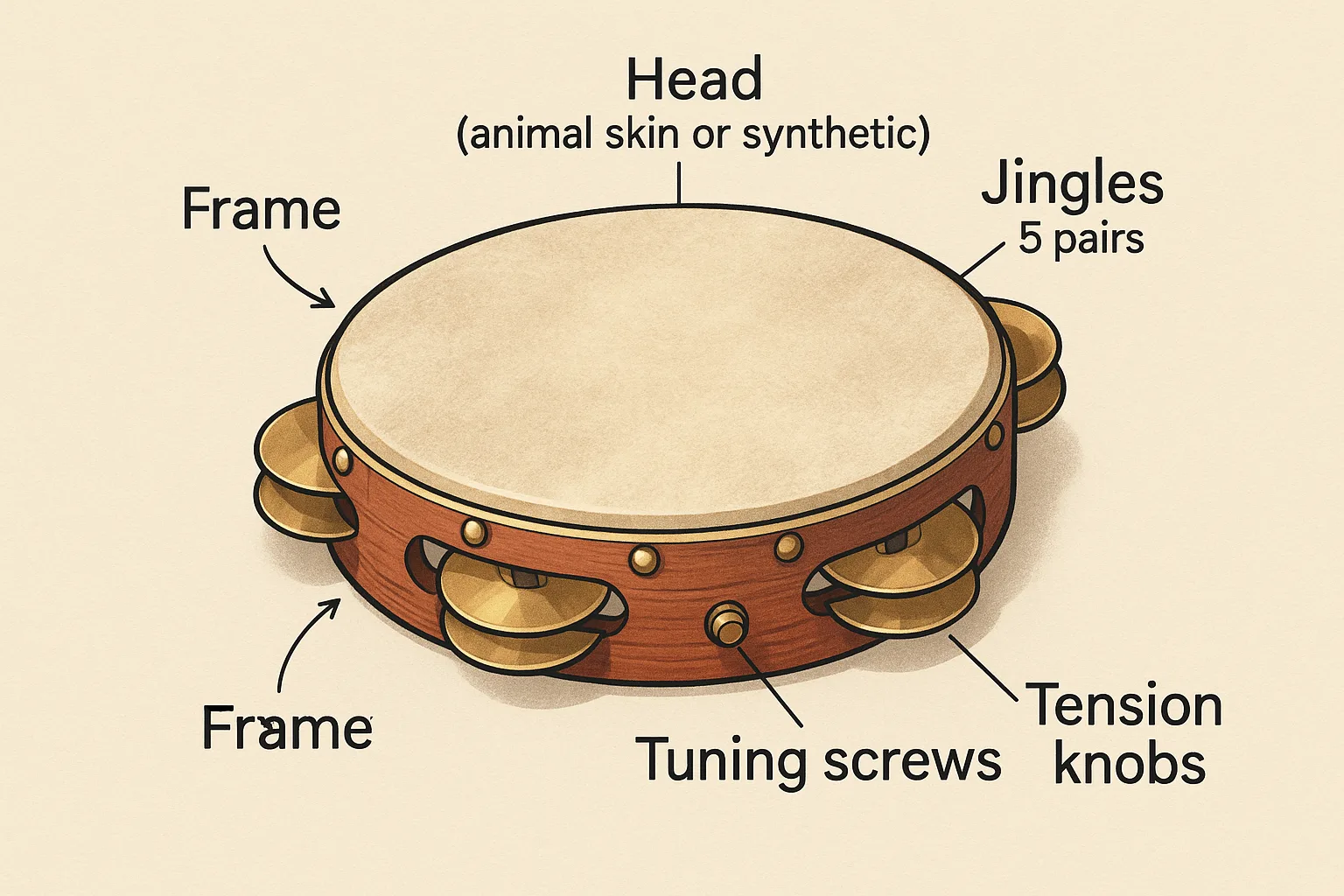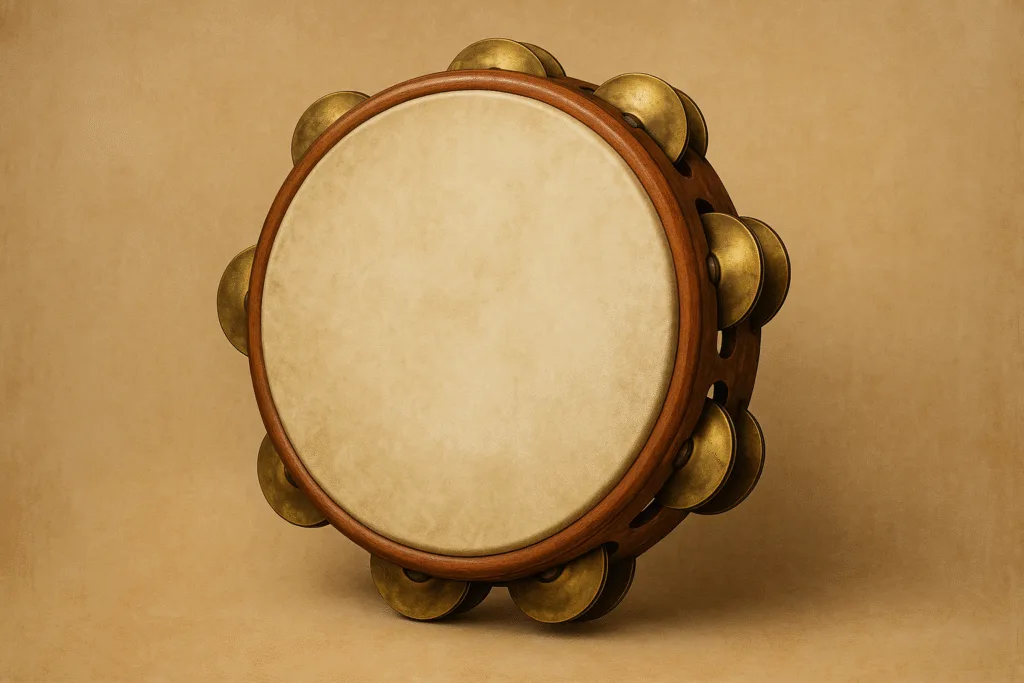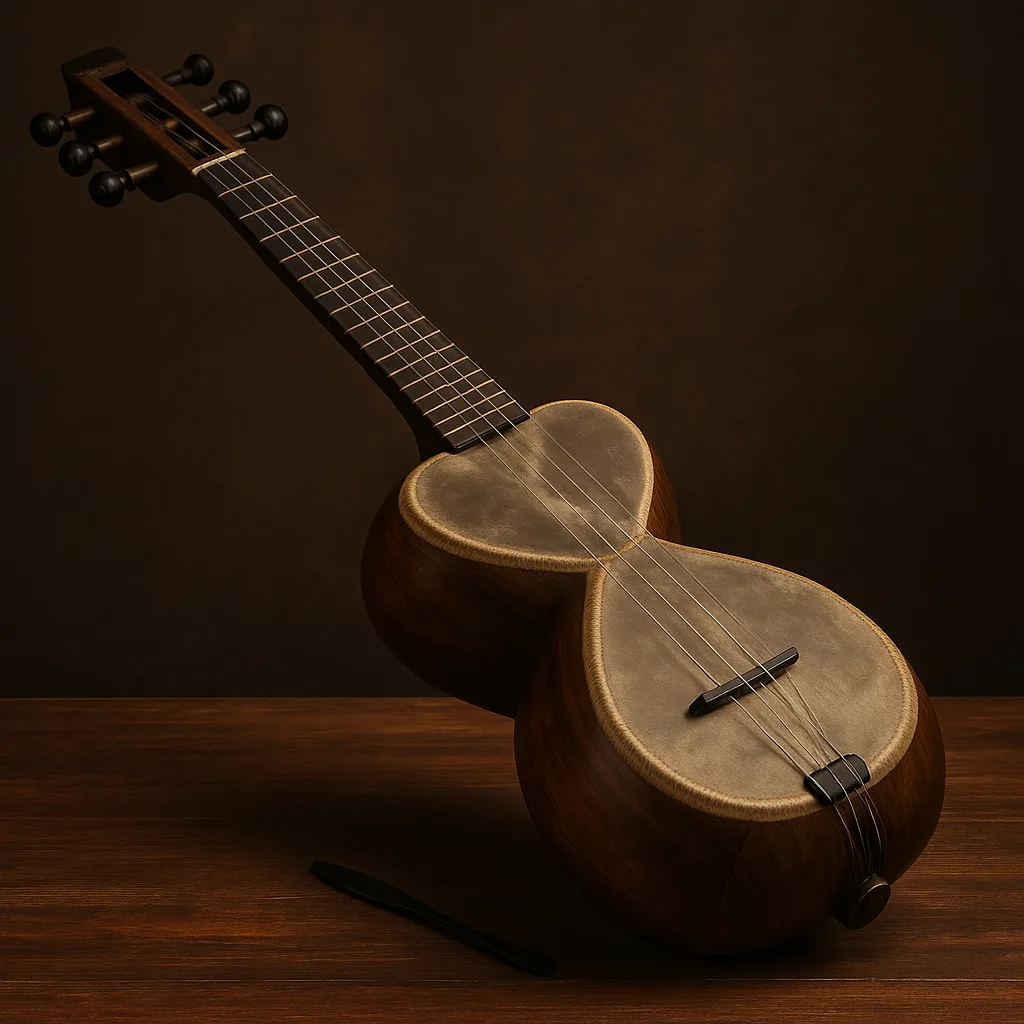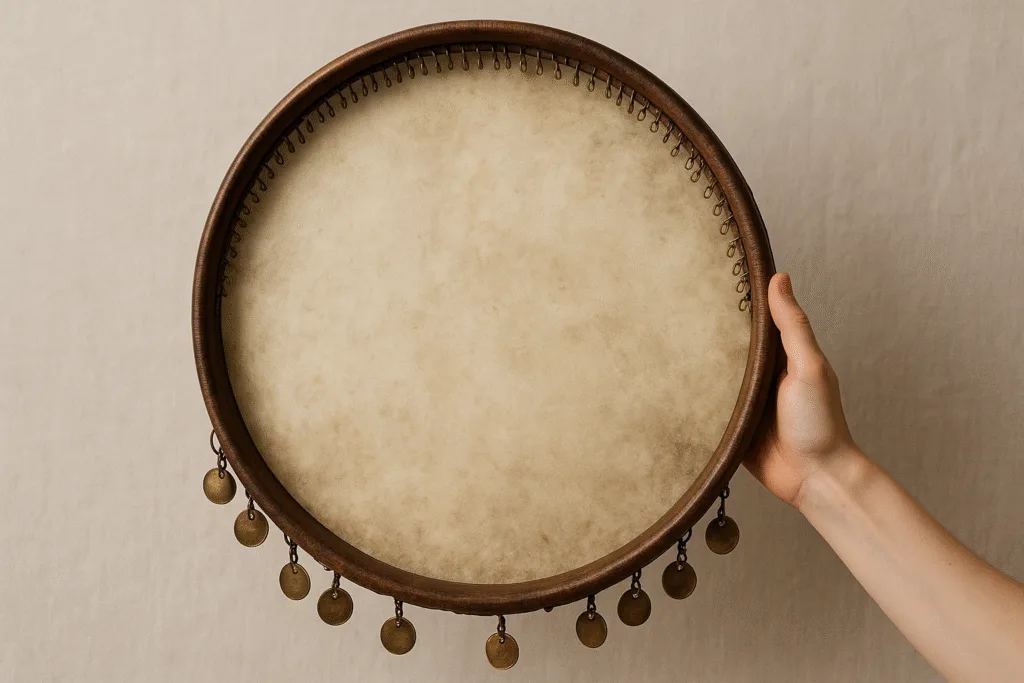Quick Features of the Riq
| Feature | Details |
|---|---|
| Origin | Egypt, Levant, and wider Middle East |
| Type | Frame drum with cymbals (tambourine family) |
| Size | Typically 22–25 cm in diameter, 5–6 cm deep |
| Materials | Wood or modern composites; fish/goat skin or synthetic heads; brass cymbals |
| Primary Role | Rhythmic leadership in Middle Eastern ensembles |
Historical Background
The riq, often referred to as the “jewel” of Middle Eastern percussion, is a small but powerful frame drum adorned with pairs of cymbals. Its history stretches back centuries, with roots in Pharaonic Egypt and Greco-Roman tambourine traditions. By the medieval Islamic period, the riq had become a fixture in classical ensembles, depicted in illuminated manuscripts and court iconography.
In Ottoman, Arab, and Persian contexts, the riq assumed a symbolic role as well as a practical one. Beyond entertainment, it served in rituals, weddings, and religious ceremonies, representing festivity and unity. Today, it remains central to takht ensembles across Egypt, Lebanon, Syria, and beyond, carrying centuries of rhythmic language into contemporary music.

Cultural Significance
The riq is more than just a rhythm keeper. It is regarded as a cultural icon across the Middle East. In Egypt, it is a vital part of classical Arabic orchestras, providing both subtle texture and driving accents. In the Levant, it is celebrated for its ability to switch from delicate jingling to thunderous drum rolls. While UNESCO has not yet listed the riq individually, its role in the preservation of Arab classical music traditions contributes to broader heritage initiatives supported by cultural ministries and international institutions.
Construction and Design
Frame and Shell
Traditionally, the riq frame is carved from hardwoods such as w alnut or rosewood. Modern makers also employ lighter composites for durability. The shell is typically 22–25 cm in diameter, with a shallow depth of about 5–6 cm, making it highly portable.
Head Material
The drumhead was historically made from fish or goat skin, valued for warmth and resonance. Today, many professionals use synthetic heads for climate stability, especially in amplified performances. A well-tuned head provides the riq with its versatile voice: deep dums, crisp taks, and expressive rolls.
Cymbals (Zills)
Ten pairs of small brass cymbals are inset into the frame. These zills (also called jingles) are what distinguish the riq from other frame drums. Their bright shimmer adds brilliance and rhythmic emphasis, allowing the player to alternate between drum mode (head-focused) and tambourine mode (cymbal-focused).
Playing Techniques
Riq technique is renowned for its complexity and agility. A skilled player can shift seamlessly between whisper-soft ornamentation and explosive climaxes. Some essential techniques include:
- Dum: The low tone produced in the center of the head.
- Tak: A sharp edge strike with the fingers.
- Rolls: Rapid finger movements across the head, often combined with cymbal shakes.
- Jingle control: Tilting the riq to silence or activate cymbals, creating dynamic contrast.
- Switching modes: Moving from frame-drum emphasis to tambourine-like brilliance mid-performance.
Mastery requires exceptional hand stamina, coordination, and subtlety. This versatility is why the riq is often called the “conductor” of Middle Eastern rhythm sections.
Musical Context
Classical Ensembles
In the Arabic takht ensemble, the riq leads the rhythm alongside the darbuka, qanun, and oud. It marks the framework of iqa‘at (rhythmic cycles), providing both time-keeping and ornamentation. A riq master can subtly guide tempo changes, accentuate melodic phrases, and create dramatic tension.
Modern Adaptations
Beyond classical traditions, the riq appears in fusion, jazz, and world music. Its ability to cut through amplified settings with shimmering cymbals has made it popular among experimental percussionists. Contemporary ensembles use it both acoustically and with microphones or pickups, highlighting its adaptability.
Learning and Practice
Students typically begin with core strokes—dum, tak, and rolls—before advancing to complete iqa‘ patterns such as Maqsum, Samai Thaqil, or Wahda Kabira. Teachers emphasize both precision and dynamic control. As the riq has no fixed pitch, the challenge lies in consistency and phrasing.
Workshops and conservatory programs now exist in Cairo, Beirut, Istanbul, and Europe. Online tutorials and video lessons have made the riq accessible to global learners, though traditional apprenticeship with a master remains invaluable.
Notable Performers
Several virtuosos have brought the riq to international recognition. In Egypt, Mohamed El-Arabi and Hossam Ramzy set benchmarks for modern technique and recording artistry. Lebanese masters such as Michel Merhej elevated the riq within Fairuz’s legendary orchestra. In contemporary settings, artists like Glen Velez and Andrea Piccioni have introduced the riq to world percussion circles, showcasing its cross-cultural adaptability.
Care and Maintenance
Because the riq’s head and cymbals are sensitive to climate, musicians must take care to store it in moderate humidity (40–55%). Natural skins should be protected from direct sun and heat; synthetic heads are more stable but can sound harsher. Cymbals benefit from gentle cleaning, avoiding abrasive polish that dulls their tone. Many players travel with padded cases to protect both the head and jingles.
Practical Tips for Buyers
- Check for an even, wrinkle-free skin or membrane.
- Ensure cymbals are balanced in tone; uneven sets can sound jarring.
- Test the weight—traditional wooden riqs can be heavier, while modern composites are lighter for long performances.
- Seek guidance from a teacher regarding the style (Egyptian vs. Levantine build) that fits your repertoire.
Global Presence
Today, the riq is heard on international stages, from Middle Eastern festivals to world-music collaborations in Europe, North America, and Asia. Its blend of ancient craftsmanship and modern versatility ensures its continued role as one of the most dynamic frame drums in existence.
References



